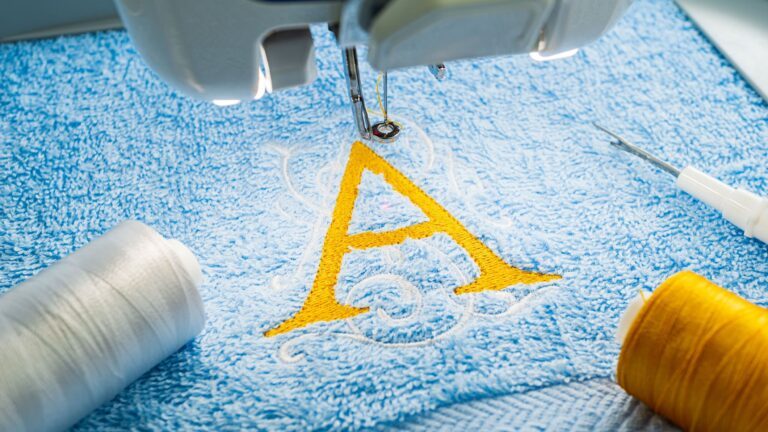Taming the Thread Dragon: Troubleshooting Embroidery Thread Breaks
Embroidery, the art of weaving stories with thread and needle, can be immensely calming. But that serenity can vanish faster than a needle through silk when your thread snaps, leaving you frustrated and staring at a tangled mess. Fear not, fellow stitchers! Thread breakage is a common foe, but with the right know-how, you can vanquish it and continue your creative journey.
This comprehensive guide delves into the world of thread breakage, exploring the culprits and crafting solutions to keep your embroidery flowing smoothly.
Understanding the Root Cause:
Before tackling the solution, let’s identify the potential reasons why your embroidery thread keeps breaking:
-
Needle Troubles:
- Wrong Size: Using a needle too thin for your thread weight can lead to snagging and breakage. Opt for a thicker needle for thicker floss.
- Bent or Blunt Needles: Blunt or bent needles struggle to pierce fabric cleanly, causing thread abrasion and breakage. Replace your needles frequently, especially after stitching through thick fabrics.
- Needle Point: Choose the correct needle point for your project. Sharp points are ideal for most fabrics, while ballpoint needles are better suited for knits.
-
Thread Tension:
- Too Tight: Excessive tension creates stress on the thread, making it more prone to snapping. Adjust your tension settings (either on your machine or by hand) for a smooth flow.
- Uneven Tension: Inconsistent tension throughout your stitching creates weak points where the thread can break. Aim for a consistent pull as you stitch.
-
Threading Technique:
- Improper Threading: Ensure your thread is threaded correctly through the machine or needle eye. A loose thread can snag and break, while a thread pulled too tightly can snap.
- Knot Placement: Large knots placed too close to the needle eye can catch and cause the thread to break. Hide knots discreetly under stitches on the back of your work.
-
Fabric Factors:
- Rough Texture: Fabrics with rough textures can snag and damage the thread. Use smoother fabrics like cotton or linen for easier stitching.
- Improper Hooping: Fabric that’s too loose or tight in the hoop can create tension on the thread, leading to breakage. Ensure your fabric is taut but not drum-tight.
-
Other Culprits:
- Low-Quality Thread: Cheap threads are more prone to breaking compared to high-quality embroidery floss. Invest in good quality thread for a smoother experience.
- Damaged Bobbin Case: A rough or nicked bobbin case can snag the thread as it winds, causing breakage. Inspect your bobbin case regularly and smooth any rough edges.
Taming the Thread Dragon: Solutions and Best Practices
Now that we’ve identified the culprits, let’s explore solutions to keep your embroidery adventures frustration-free:
-
Needle Savvy:
- Match the Needle to the Thread: A size 7 or 8 needle is a good starting point for most embroidery floss. Refer to a needle size chart for specific recommendations based on thread weight and fabric type.
- Invest in a Needle Minder: This handy tool helps prevent lost needles and keeps them readily accessible.
- Develop a “Change Often” Habit: Don’t wait for your needle to break! Replace needles regularly, especially after stitching through thick fabrics or multiple projects.
-
Threading Techniques for Smooth Sailing:
- Double the Thread: Double your embroidery floss for added strength. Thread both strands through the needle and knot the end securely.
- Thread with Care: Don’t pull the thread too tightly during threading. Aim for a gentle yet secure hold.
- Master the Knot: Learn different knotting techniques for a secure start without adding bulk. Consider using a surgeon’s knot for a small and sturdy knot.
-
Tension Talk:
- Find the Tension Sweet Spot: Experiment with different tension settings until you find a balance that allows the thread to flow smoothly without breaking.
- Maintain Consistent Tension: Aim for a consistent pull on the thread as you stitch to avoid weak points.
-
Fabric Friendliness:
- Fabric Choice Matters: Use fabrics specifically designed for embroidery like cotton or linen. Avoid fabrics with rough textures or loose weaves.
- Hooping for Success: Hoop your fabric taut but not drum-tight. A quilting hoop or embroidery hoop with a screw mechanism offers the best tension control.
-
Quality Matters:
- Invest in Quality Thread: Splurge on good quality embroidery floss. Brands like DMC offer a wide range of colors and are known for their strength and durability.
Beyond the Basics: Advanced Tips and Tricks
For seasoned stitchers seeking to further refine their craft, here are some additional tips to minimize thread breakage:
- Shorten Your Stitches: Shorter stitches put less stress on the thread, reducing the chances of breaking.
- Stitch Length Variation: Consider incorporating a mix of stitch lengths for added texture and to distribute tension more evenly.
- Embroidery Stabilizers: Use stabilizers like water-soluble or tear-away stabilizers for added support, especially when stitching on delicate fabrics.
- Thread Conditioning: Some embroiderers swear by lightly waxing their thread to reduce friction and increase strength. Experiment with a small amount on a scrap piece of fabric to see if it works for you.
Conclusion: A Farewell to Frustrated Stitching
By understanding the causes of thread breakage and implementing the solutions outlined above, you can minimize these frustrating interruptions and keep your embroidery flowing smoothly. Remember, practice makes perfect! The more you stitch, the more comfortable you’ll become with handling your thread and creating beautiful pieces. So, keep calm, thread strong, and embrace the joy of embroidery!
Bonus Tip: Develop a troubleshooting routine. When your thread breaks, take a moment to analyze the situation. Was it a needle issue, tension problem, or something else? By identifying the culprit, you can take corrective action and prevent future breaks.
Happy Stitching!
Related Posts
Discover relevant articles, tutorials, and tips to improve your skills and explore new techniques.
Stay inspired and connected to our embroidery community.






